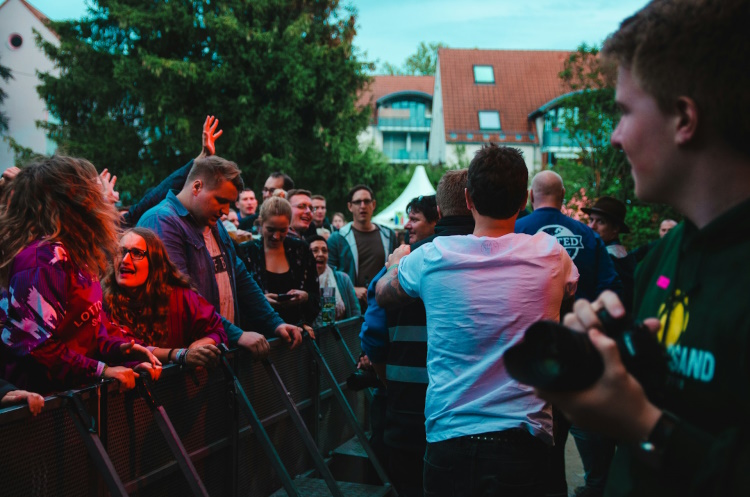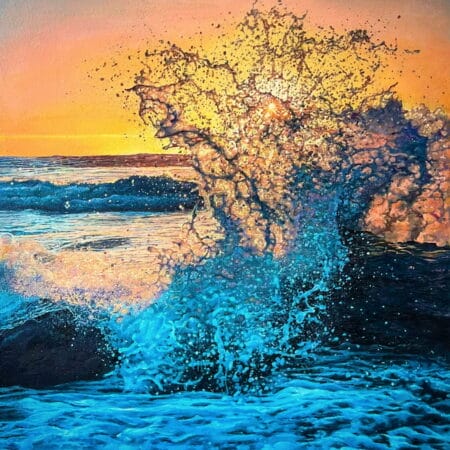Art events exercise a strong attraction to a diverse audience and bring people together in special rooms. At the same time, they present the planners in front of the task of creating an environment that is both artistically appealing and safe. The security planning must not be understood as a mandatory exercise, but as a central component of a professional event design.
If you "safely lock up art positions and events" , you have to take numerous aspects into account: structural conditions, visitor flows, escape routes and legal requirements. A successful barrier not only protects exhibits from damage or theft, but also ensures a pleasant, smooth process for everyone involved.
Comprehensive preparation begins well before the actual event date. It is important to clarify responsibilities and develop security concept Especially with large exhibitions, vernissages or interactive art events, in which visitors are actively involved, the claim to the organization increases.
Only when security planning and artistic conception go hand in hand can an all -round positive event experience arise. In this article, strategies, instruments and best practices are therefore presented in order to save art events effectively, professionally and at the same time visitor-friendly.
Define risk analysis and requirements
The risk analysis is the first and most important step to make an event secure. It is the basis for all further plans and must take place in detail and realistically. Potential sources of danger are identified that can result from the event location itself, from the planned activities or from the expected visitor volume. Depending on the size and character of the event, there are different scenarios - from small gallery openings with selected guests to large -scale art exhibitions with several hundred or even thousands of visitors. It is crucial here to systematically record and evaluate the relevant hazards.
The creation of such a concept requires the close cooperation of all parties involved, from teams of curator to security experts to authorities. It is important to take legal requirements into account, such as fire protection regulations or assembly institutions, but also individual requirements that arise from the artwork or the type of exhibition.
It is not uncommon for art installations to be large -format, heavy or sensitive - and must therefore be particularly secured. Escape routes, escape routes and the accessibility for emergency services also belong in this planning phase. A thorough risk analysis laid the foundation for a barrier that is not only effective, but also meets the aesthetic and functional requirements of an art exhibition.
Detailed planning is the basis for locking up art events in such a way that they ensure both visitor friendliness and maximum security. ”
The option of to buy a barrier grille helps with the safe barrier of art exhibitions and events. Because this can be designed by individual solutions that are tailored to the event location and the desired security zones. Today, providers enable tailor -made concepts that range from simple mobile grids to modularly combinable systems. Anyone who invests here saves themselves later and ensure that the barrier does not become a disruptive factor for the art experience.
Select suitable shut -off systems

Photo by Kilian Seiler @kilianfoto, via unsplash
Because not every shut -off system is suitable for any kind of event or location. Mobile barrier grids are available, for example, when it comes to realizing flexible solutions for changing floor plans. They can be easily transported, quickly assembled and dismantled and enable variable design of running paths and security zones. Solidly installed barrier systems, on the other hand, are more robust and often offer greater protection against unauthorized entering, but are only suitable where structural conditions and long -term plans allow this.
In addition to the basic functionality, the design also plays a significant role. Art exhibitions live from an atmosphere that invites visitors to linger and discover. A barrier must not destroy this impression, but must insert itself into the overall picture as unobtrusively as possible. Materials, colors and shapes should therefore be carefully selected.
Modern systems enable safety aspects and aesthetics , for example through elegant design scales or by using branding areas that also serve as a visitor information. Privacy screens can also be used to protect sensitive areas or to specifically steer the current of visitor without disturbing the visual experience.
In addition, the combination of different systems is often the key to success. Different zones within the event can have specific requirements: While robust police arrangements in the entrance area ensure clear demarcation, subtle cuts or rope barriers can be sufficient indoors. This modular approach allows the security concept to be implemented flexibly and efficiently.
At the same time, the effort for personnel is reduced, since well -thought -out physical barriers reduce the need for constant surveillance. For organizers, it therefore makes sense to check all options in the planning phase and to obtain an expert council if necessary in order to develop a tailor -made solution.
Visitor steering and access management
The steering of visitor flows is one of the most important tasks of security planning for art exhibitions and events. Well thought -out access management prevents bottlenecks, reduces waiting times and increases the feeling of security of everyone present. It is important to find the balance between open, inviting rooms and clearly defined ways.
Visitors should be able to move freely, at the same time sensitive areas such as structures, installations or emergency outputs must remain reliably protected. The art is to set barriers in such a way that they are intuitive and support the natural flow of movement. Well -placed signs, markings on the floor or targeted control systems help to give orientation without affecting the enjoyment of art.
Another central aspect is the planning of the inputs and outputs . Here, when entering the site, it is often decided whether the security measures are accepted or encounter resistance. Width, clearly marked inputs prevent crowds, while separate outputs make it easier to process at the end of the event.
Ticket controls and security checks must be organized in such a way that they run efficiently and friendly. Additional security personnel may be required, especially for top -class exhibitions or particularly precious exhibits. Communication with the guests should be designed professionally and de -escalating to ensure a pleasant atmosphere.
In addition to the classic measures, there are a variety of technical aids that access management . Turntings, electronic ticketing systems or visitor meters enable precise control and provide organizers and organizers essential data for follow -up. Nevertheless, the human factor must not be underestimated: friendly staff at the entrances and within the exhibition ensures a relaxed atmosphere and can react flexibly to unforeseen situations.
A list of helpful elements for access management can include the following points:
- Significant labeling of inputs and outputs
- Plan barrier -free access
- Efficient ticket controls and safety locks
- Personnel planning for security and guest service
- Use of signage and floor markings
Communication and coordination in the team
A security concept stands and falls with the quality of communication in the organization team. Only if everyone involved is informed about the processes and know who takes on which task, can the barrier work smoothly. Short distances and clear agreements are essential, especially for art exhibitions with complex rooms or changing visitor numbers.
Here it is worth creating detailed operational plan This includes not only classic security tasks such as inlet controls or emergency management , but also services such as visitor information or wardrobe. All interfaces must be defined clean so that you can react quickly in an emergency.
A tried and tested instrument in the planning phase is the so -called application discussion . It serves to bring everyone involved to the same status and clarify open questions. Not only the managers should be integrated, but also the operational staff who will later be used on site.
Role games and trial runs can help internalize processes and recognize weaknesses. In addition, the communication plan should also take into account contact with external partners such as the police, fire brigade or medical services. Clear agreements about responsibilities and reports ensure that no time is lost in an emergency.
In order to clearly present the diverse tasks, a table can help in advance:
| Task | Details | Responsible |
| Instruction staff | Escape routes, distribution of tasks | Security management |
| Visitor information | Signposts, digital ads | Communication team |
| Access controls | Ticket test, security checks | Admission staff |
| Emergency management | First aid, evacuation plans | Security officer |
| Coordination with authorities | Police, fire brigade, regulatory office | Operations management |
With such a plan, responsibilities can be clearly named and friction losses can be avoided. At the same time, he creates transparency and trust within the team, which is an invaluable advantage in the often hectic everyday work.
Security as part of the event experience
Security is not a mere by -product of the event planning, but a central element that decisively decides on the success of an art exhibition or a cultural event. A well thought -out barrier not only creates protection for precious exhibits and visitors, but also makes a decisive contribution to the overall experience.
If security measures are professionally planned and implemented, they do not act like disturbing barriers, but like natural components of the event architecture. The goal must be to create an environment in which guests feel comfortable and at the same time move safely. This includes flexible, aesthetically appealing barrier systems as well as clear visitor tour and a well -trained, communicative team.
There is also a signal to the audience: it shows that organizers take their responsibility seriously and value quality. A well thought -out organization is perceived particularly positively, especially in art exhibitions, which are often visited by a culturally interested, sensitive audience. Those who save or plan inadequately not only risk organizational chaos, but also loss of image. It is therefore worth investing in advice, planning and high -quality equipment - be it with risk analysis, the selection of suitable shut -off grids or the training of the staff.
Ultimately, the security planning for art exhibitions and events is always about an interaction of many factors: structural conditions, technical solutions and human competence. With an integrated approach that takes all of these dimensions into account, not only risks can be minimized, but also permanent positive impressions can be created. This makes security from an annoying duty to chance to raise the event to a new professional level and to gain the trust of the guests permanently.

Owner and Managing Director of Kunstplaza. Publicist, editor, and passionate blogger in the field of art, design, and creativity since 2011. Successful completion of a degree in web design as part of a university program (2008). Further development of creativity techniques through courses in free drawing, expressive painting, and theater/acting. Profound knowledge of the art market through many years of journalistic research and numerous collaborations with actors/institutions from art and culture.

















